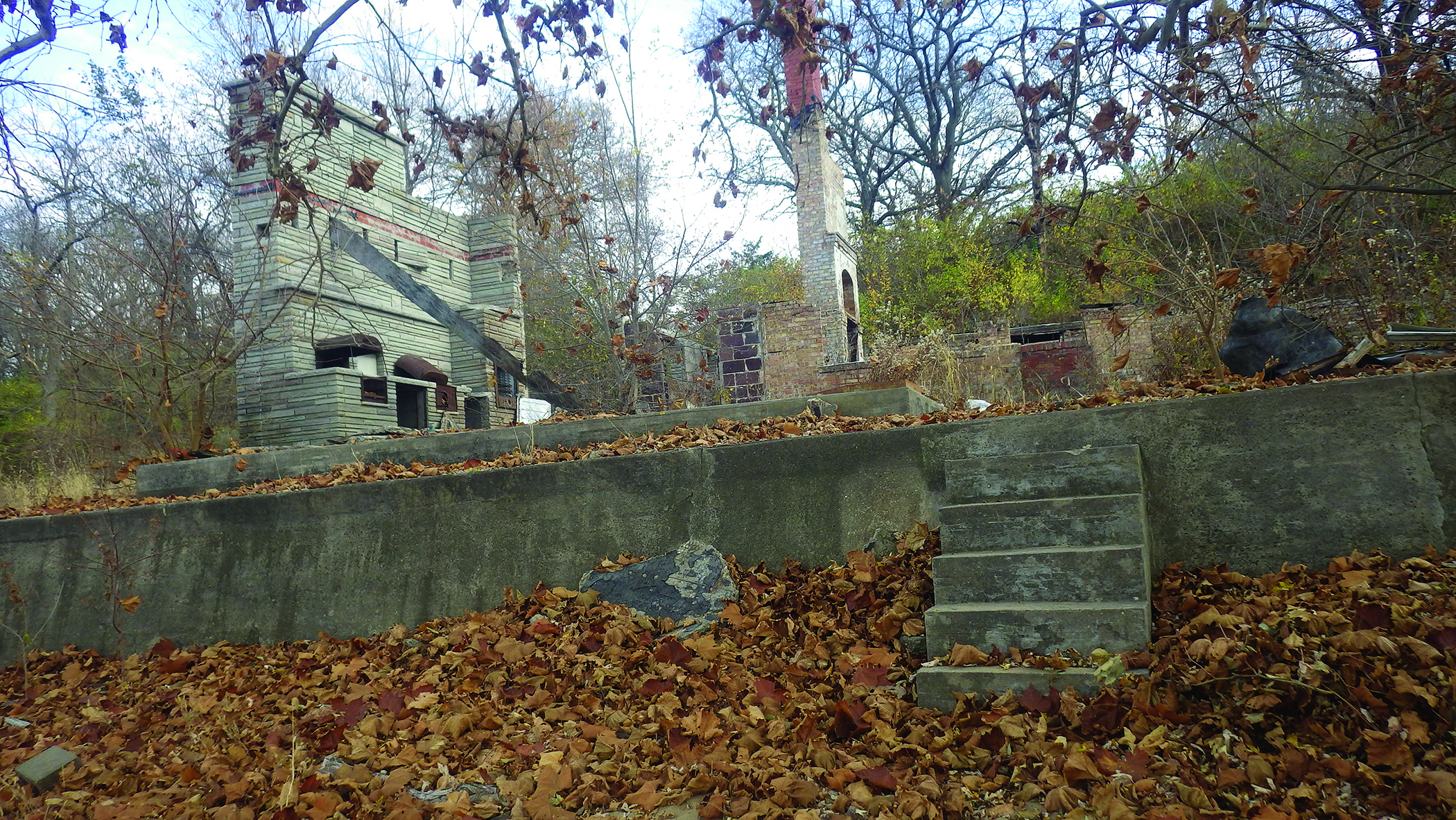MIDWEST—The Conservancy’s 2.5 acre Twin Mounds preserve consists of the south peak of the Twin Mound and a smaller conical mound to the north. The site is important because of the size of the mounds, their excellent state of preservation, and the fact that they represent one of the first Midwestern archaeological sites labelled on a map by Europeans. The site has the potential to yield significant information regarding Havana Hopewell occupation, community organization, and monumental construction.
In addition to the Native American mounds, the property also contains a series of crumbling access drives and foundations related to a number of cabins and fishing camps fronting the Illinois River. These historic remains date from the late nineteenth through the twentieth centuries and included the ruins of a large home with standing walls and chimneys. Given the dangers and liability concerns of this situation, the Conservancy contracted with Ishmael Construction, a local company, to have the standing structural elements dismantled.
Timothy Pauketat, Director of the Illinois State Archaeological Survey, offered to assist with staff for monitoring of the remediation to assure there was no ground disturbance at the site. Thus two veteran archaeologists, David Nolan and Rich Fishel, were on hand during the work to dismantle the fireplaces, chimneys, and free standing walls. All walls fronting the terrace below the large conical mound were left intact to prevent problems with erosion. The debris wasused to fill onsite basements and other depressions associated with the structures. The final step of the process was placing a layer of sand over these depressions to level the ground surface. This remediation removed unstable structural elements as well as any potential liability issues due to someone being hurt on the property. This work is the first step in stabilizing this valuable archaeological preserve.




